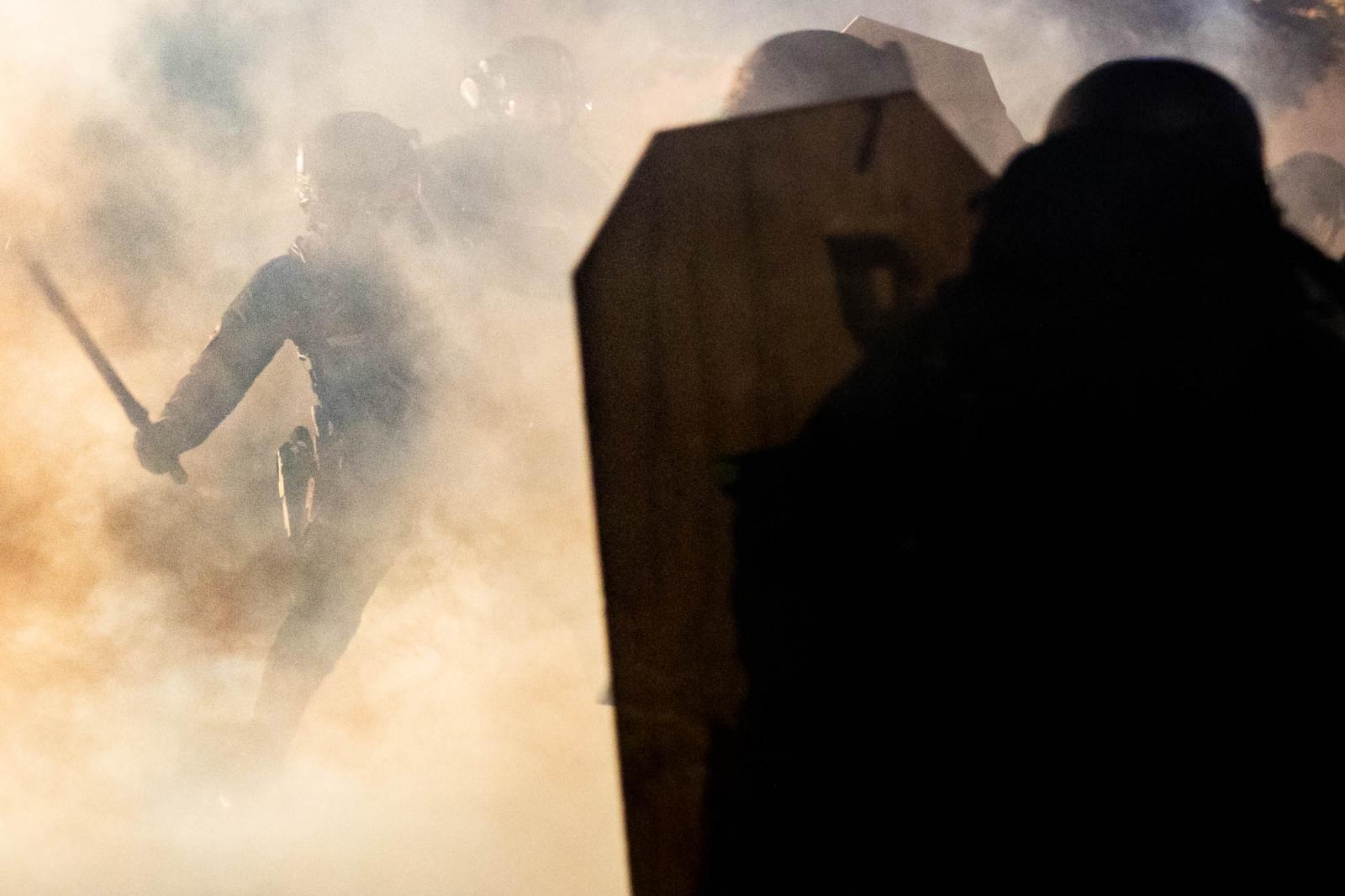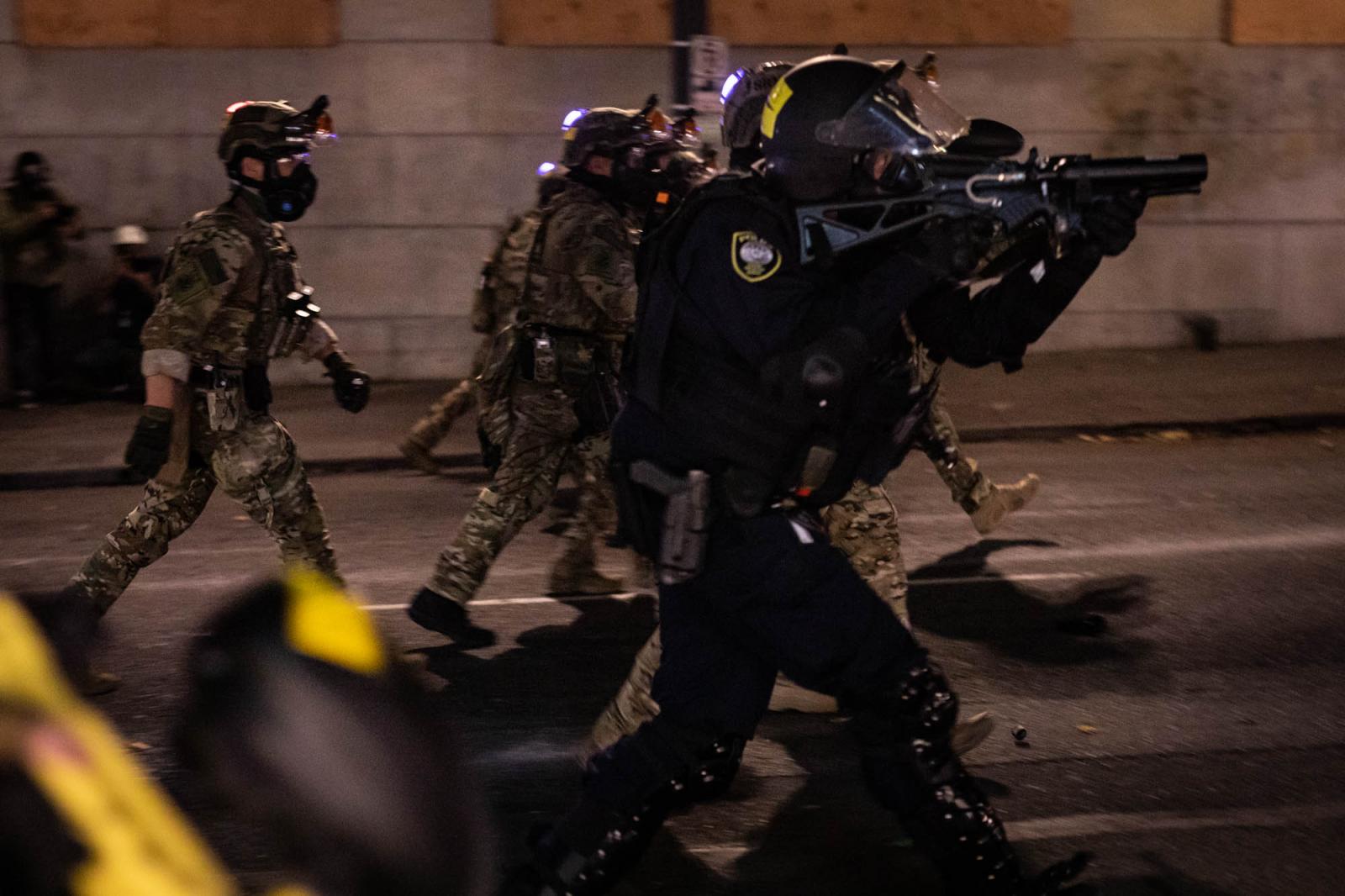Public Story
Quis custodiet ipsos custodes?
As thousands, then tens of thousands of Americans went to the streets in protest after the murder of George Floyd reports of officers dressed in military apparel and equipped with an array of weaponry surfaced and then quickly spread.
For many, the aggressive tactics and brutality highlighted the precise reason(s) that prompted many to initially protest. Rather than de-escalate, the actions of officers had the opposite effect and public outrage mounted.
The first time I was shot with a “less-lethal“ munition by a police officer in riot gear was in Syracuse, New York, while covering a demonstration the night after George Floyd was murdered. At the time I was shocked, a nod to my short-lived naiveté.
By the end of July I’d equipped myself with a gas mask, eye protection, a helmet, knee pads and a bullet proof vest as I documented law enforcement crack down on protesters [and members of the Press] near nightly in Portland, Oregon.
A kind of “us vs them” mentality was palpable on the street. Rather than differentiate between peaceful protesters and those committing acts of violence and arson officers often responded en masse. While targeted arrests did occur the use of such indiscriminate weaponry as teargas and “less-lethal” munitions make exactness impossible.
In Portland a dystopian reality materialized as Federal agents protected buildings with teargas and munitions, moms and dads armed themselves with leaf blowers and homemade shields, and the primary national narrative became that of black-clad young people burning buildings down. At best, this was a reductive and incomplete depiction. For every dumpster set on fire or window broken, there were protesters and members of the Press who were physically brutalized and subject to the inhalation of chemical agents. A Department of Justice report found that Portland police officers used force more than 6,000 times in a six-month period. In one illustrative example of misused force an officer justified firing a “less-lethal impact munition” at someone who had engaged in “furtive conversation” and then ran away.
In a free society, the purported purpose of law enforcement is to "promote public safety and uphold the rule of law so that individual liberty may flourish".
But in 2020 those paid and sworn to protect the populace instead acted to control, contain and crush dissent. The state responded to protests against police brutality with chemical agents, physical violence and weaponry while those in positions of power eschewed accountability and transparency, opting instead to protect theirs and their own. The state prioritized buildings over human bodies and failed to protect those most vulnerable; taxpayer dollars funded the violence wielded to crush dissent and uphold societal inequalities, all while under the guise of public safety.
The militarization of U.S. domestic law enforcement sharply escalated following September 11, 2011—the terrorist attack initiated a strategic shift toward tactics and practices that employed militarized responses to even routine police activities. In a federal program known as the Defense Logistics Agency’s 1033 Program the government granted the transfer of military equipment to local law enforcement agencies; this was coupled with the Homeland Security Grant Program gives police departments funding to buy military-grade weapons and vehicles. In 2020 alone nearly $90 million worth of military equipment was transferred to police departments throughout the United States while more than $7.4 billion has been distributed since 1990. Small towns throughout America are home to [list of equipment] (The Intercept)
In many regards, police agencies are a mirror of our beliefs and values as a society. Our uniformed police forces are responsible to the people and the people can hold them accountable.
The infringement of the constitutional right of people to assemble and the obstruction of the Press is an assault on democracy and an erosion of the exceptional nation America purports itself to be. Whatever your political stance or beliefs about the 2020 protests, the disproportionate and indiscriminate use of force and chemical weaponry deployed by the government should alarm every American citizen.
This collection of images is not intended to be a political statement or a condemnation of any individual police officer who has upheld his or her oath. This is a visual and written record, a fraction of the

























